

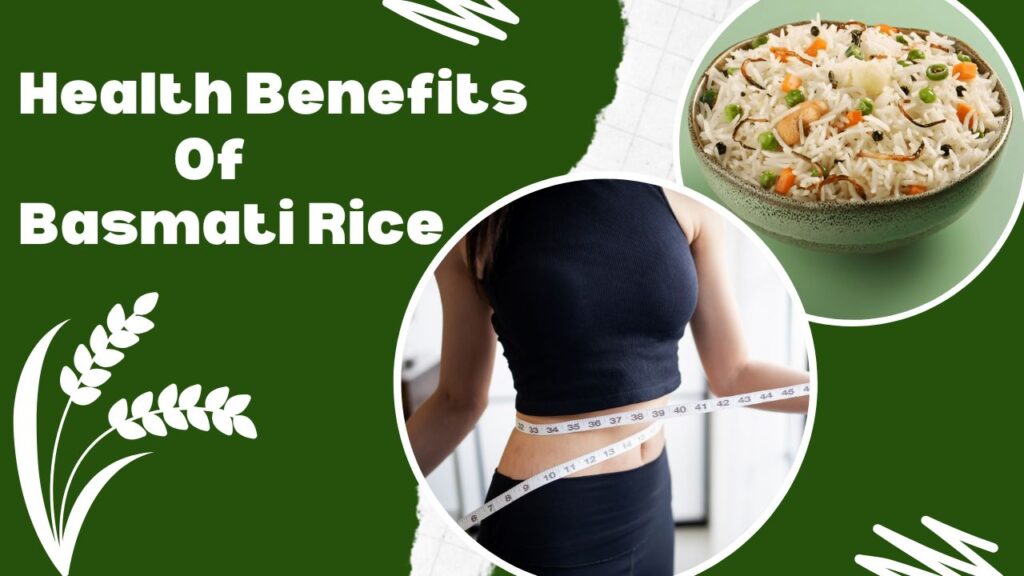
Basmati rice is celebrated around the world for its aromatic fragrance, distinctive flavor, and slender grains. But beyond its delightful culinary qualities, what are the real health benefits of basmati rice? If you’ve ever wondered, “Is basmati rice healthy?”, you’re not alone. Many people are curious about basmati rice nutrition, basmati rice calories, and its impact on blood sugar levels. In addition, this guide explores the health benefits of basmati rice, its nutritional profile, glycemic index, and why it is often recommended for people with diabetes.
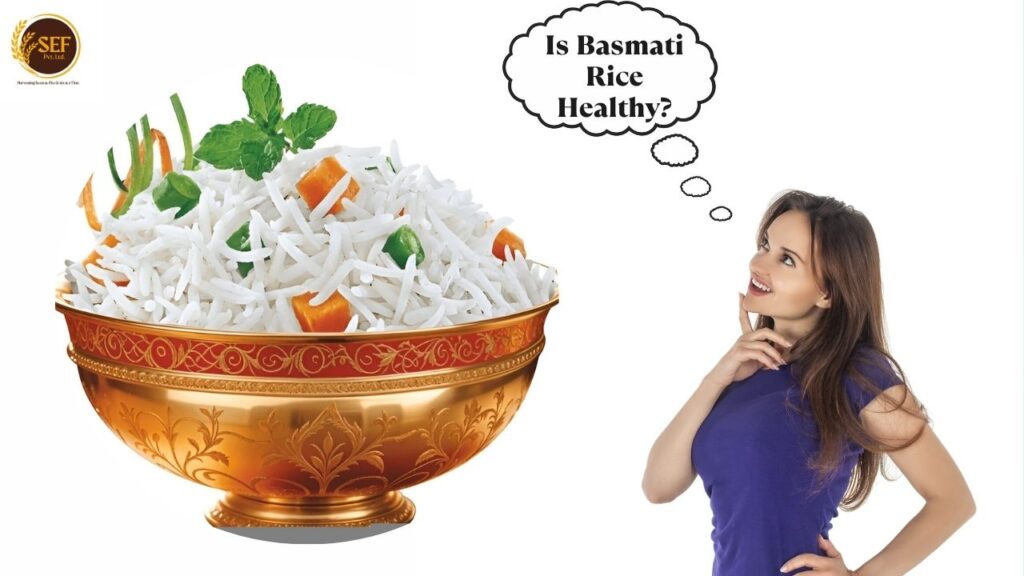
Rice from the Basmati region is indeed a healthy choice when consumed in moderation and as part of a balanced diet. Additionally, it provides a wealth of nutrients and is lower in arsenic than many other rice types. Brown basmati rice, in particular, retains its bran layer, which provides additional fiber, vitamins, and minerals that promote good health.
Key reasons why basmati rice is considered healthy:
Low to Medium Glycemic Index: Better for blood sugar control.
Rich in Fiber: Especially brown basmati, aiding digestion.
Packed with B Vitamins: Important for energy and brain function.
Contains Essential Minerals: Such as magnesium, iron, and zinc.
Naturally Gluten-Free: Making it safe for people with gluten intolerance.
Thus, when people ask “is basmati rice healthy?”, the answer is a resounding yes, especially when compared to other refined grains.
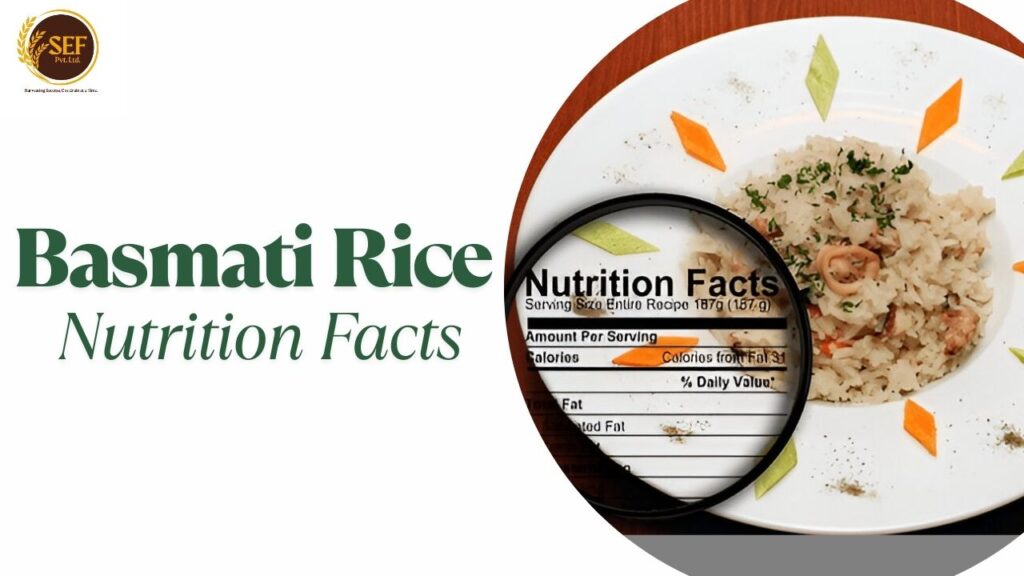
Here are the nutritional facts for cooked white basmati rice:
| Nutrient | Amount (per 1 cup cooked) |
|---|---|
| Calories | 210 kcal |
| Carbohydrates | 46 g |
| Fiber | 0.7 g (white), 3.5 g (brown) |
| Protein | 4 g |
| Fat | 0.5 g |
| Glycemic Index | 50-58 |
| Vitamin B1 (Thiamine) | 22% DV |
| Vitamin B6 | 15% DV |
| Folate | 20% DV |
| Iron | 6% DV |
| Magnesium | 7% DV |
| Zinc | 8% DV |
Compared to white basmati rice, brown basmati rice has slightly more fiber and micronutrients, making it a more nutrient-dense option.
Basmati rice calories are around 210 calories per cup of cooked white basmati rice. Additionally, brown basmati rice has a higher calorie content, approximately 215 calories per cup, due to the retained fiber and nutrients.
Calorie Control Tips:
In terms of weight management or simply eating for energy, basmati rice offers a good balance between calories and nutrients.
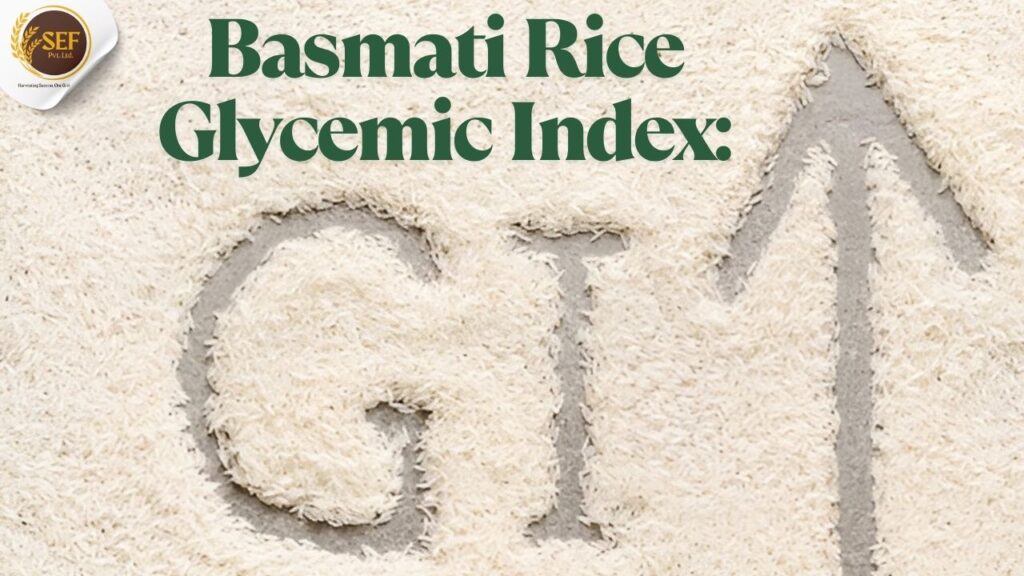
There are many health benefits associated with basmati rice, including its relatively low glycemic index (GI). In fact, the Basmati Rice Glycemic Index typically falls between 50 and 58, classifying it as a low to medium-GI food.
Why Low GI Matters:
Slow release of energy
Better blood sugar control
Reduced risk of insulin spikes
Improved appetite regulation
For individuals asking about “basmati rice glycemic index,” it’s comforting to know that basmati rice causes a slower, steadier rise in blood sugar compared to standard white rice.
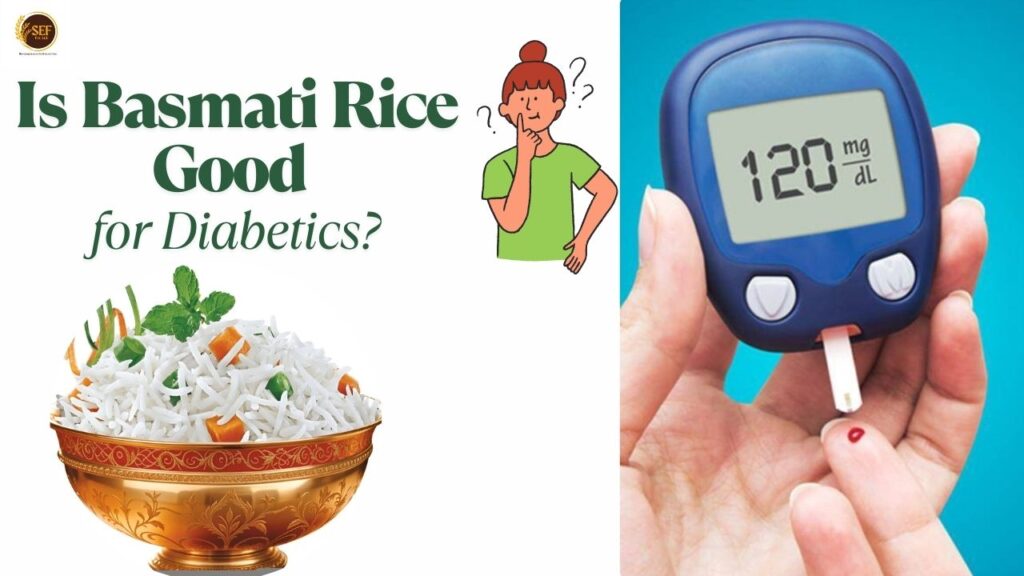
If you’re wondering, “is basmati rice good for diabetics?”, the answer is generally yes, with a few important considerations:
Low Glycemic Index: Helps maintain stable blood sugar levels.
Higher Fiber (Brown Basmati): Further improves glucose regulation.
Portion Control Needed: Stick to small servings, about ½ to 1 cup cooked.
Pair with Proteins and Vegetables: Helps slow carbohydrate absorption.
Brown basmati rice is a better choice for diabetics than the white version due to its higher fiber content. However, white basmati can also be included moderately in a diabetic-friendly meal plan.
When discussing the health benefits of basmati rice, it’s important to compare the two main types: white rice vs brown rice. Each offers unique nutritional advantages depending on your dietary needs.
| Feature | White Basmati Rice | Brown Basmati Rice |
|---|---|---|
| Type | White Basmati Rice | Brown Basmati Rice |
| Processing | Bran removed | Bran retained |
| Fiber | Low | High |
| Glycemic Index | 50-58 | 45-52 |
| Nutrient Content | Moderate | Higher |
| Cooking Time | Shorter | Longer |
| Digestibility | Easier | Slightly heavier |
Brown basmati rice is generally considered healthier because it is less processed, retains more fiber, and offers additional vitamins and minerals. However, white basmati rice is still a nutritious choice compared to regular white rice.
Besides blood sugar control and balanced nutrition, basmati rice offers several other health advantages:
Brown basmati rice contains whole grains that help lower cholesterol levels.
A diet high in fiber supports better cardiovascular health.
Soluble fiber in basmati rice aids digestion and prevents constipation.
Improved gut health leads to enhanced nutrient absorption.
High-fiber diets are linked to lower risks of colorectal cancer.
Brown basmati's fiber content plays a significant role.
High B vitamin content (especially thiamine) supports cognitive function.
Prevents conditions like Wernicke encephalopathy.
Low GI foods like basmati rice help control hunger and reduce overeating.
For the best nutritional outcomes:
Step-by-Step Cooking Guide:
Rinse Thoroughly: Removes excess starch.
Soak for 20-30 Minutes: Reduces cooking time and improves texture.
Use Right Ratio: 1 cup rice to 1.5 – 1.75 cups water.
Boil and Simmer: Bring water to boil, then simmer covered until all water is absorbed.
Let it Rest: Let it sit covered for 5 minutes after cooking.
Fluff with Fork: For light, separate grains.
Basmati rice is more than just a flavorful addition to your plate — it’s a smart health choice. With its low glycemic index, rich nutrient profile, and easy digestibility, basmati rice aligns well with diets focused on heart wellness, diabetes control, and digestive health. While some may explore eating raw rice benefits, it’s important to prioritize cooked varieties like basmati for safety and nutrition. Whether white or brown, basmati is often considered the best rice for health when consumed in moderation. For optimal results, always choose high-quality, minimally processed basmati rice and prepare it with care.
Yes, basmati rice is considered healthier due to its lower glycemic index, higher fiber content (especially in brown basmati), and easier digestibility.
In moderation, yes. Eating basmati rice daily can be part of a balanced diet, offering sustained energy and supporting digestive health.
Brown basmati rice is among the healthiest, offering whole-grain benefits, essential nutrients, and a low glycemic impact.
No, basmati rice is naturally cholesterol-free and can support heart health when eaten as part of a low-fat diet.
A fiber-rich diet, exercise, and foods like oats, fruits, and brown basmati rice can help reduce LDL (bad) cholesterol levels.
Refined white basmati rice may have fewer nutrients than its brown counterpart. Excess intake without balance can contribute to blood sugar spikes.
Yes, diabetics can consume basmati rice in controlled portions. Its low to medium glycemic index helps manage blood sugar levels effectively.